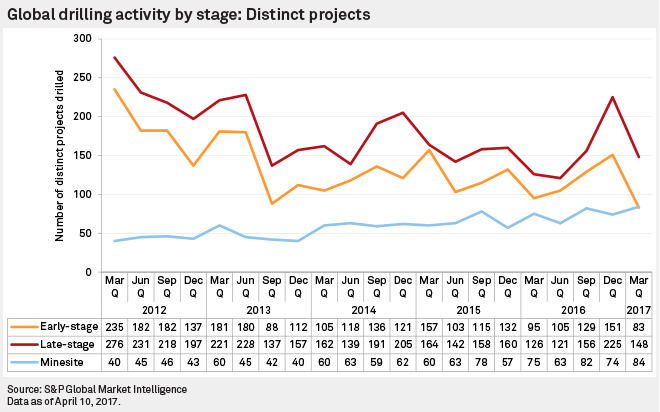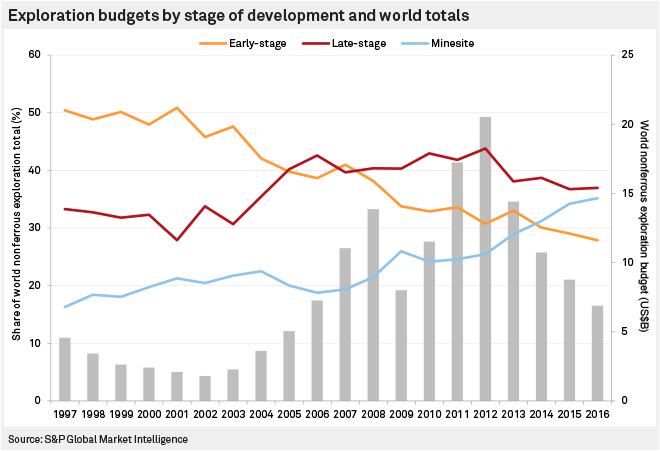By Carrie MacDonald and Christopher Galbraith | 30 June 2017
According to data compiled for S&P Global Market Intelligence's quarterly Industry Monitor report, the number of distinct precious, base and specialty metals projects with reported drill results has followed a downward trend globally since 2012. Spurred lower by declining metals prices, poor investor appetite and limited financial bandwidth, exploration companies have continued to refocus their efforts, leading many companies to abandon lower probability projects and to concentrate on their core holdings.

Apart from occasional quarterly jumps in drilling activity, the number of early stage and late-stage projects drilled has been on a declining trend since the start of 2012. However, in a data set which is heavily weighted toward junior companies, minesite drilling has seen a consistent upward trend. The number of minesite projects drilled reached a multiyear high in the first quarter of this year.
Praesent porttitor malesuada ornare. Etiam pellentesque vitae risus in elementum. Vivamus ex sem, maximus in ligula vitae, dictum luctus felis. Etiam et rutrum mauris, congue hendrerit nisi. Aenean lorem sem, consequat sit amet diam ut, pellentesque aliquet ante. Ut egestas massa mi, nec condimentum ipsum suscipit non. Interdum et malesuada fames ac ante ipsum primis in faucibus.
Praesent porttitor malesuada ornare. Etiam pellentesque vitae risus in elementum. Vivamus ex sem, maximus in ligula vitae, dictum luctus felis. Etiam et rutrum mauris, congue hendrerit nisi. Aenean lorem sem, consequat sit amet diam ut, pellentesque aliquet ante. Ut egestas massa mi, nec condimentum ipsum suscipit non. Interdum et malesuada fames ac ante ipsum primis in faucibus.

You may also be interested in:
To find out more about our global Metals and Mining solution, please visit spglobal.com/marketintelligence.
Copyright © 2017 by S&P Global Market Intelligence, a division of S&P Global Inc. All rights reserved. No content may be reproduced or distributed without the prior written permission of S&P Global Market Intelligence or its affiliates. The content is provided on an “as is” basis.